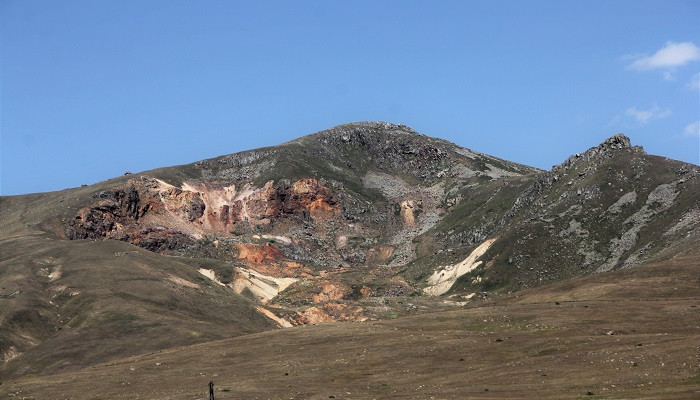
Amulsar gold-bearing quartzite mine is located in one of the most important biodiversity areas including Important Bird Area (IBA), Emerald Site and Key Biodiversity Area (KBA).
It is a habitat for more than 25 species of animals and at least two species of plants, listed in the Red Data Book of Armenia.
Exploitation of the mine, together with other threats, will destroy habitats of threatened species and physically will damage most of them.
Proposed measures by the Environmental Impact Assessment (EIA) for the conservation of impacted species are insufficient. Measures proposed in the biodiversity offsetting program are incomplete and need to be reconsidered. These facts were also reflected in the recent studies of the ELARD.
The study on the biological diversity of Amulsar mine were not completely conducted; there were no studies of fungi of the area, additional studies are required on some species registered in the Red Data Book of Armenia, including Acantholimon caryophyllaceum (Vulnerable), Eastern Spadefoot (Vulnerable), Transcaucasian Rat Snake (Vulnerable), Bezoar Goat (Vulnerable) and Apollo Butterfly (Vulnerable). There is no conservation or offset program for these species.
The biodiversity conservation program of Amulsar mine project refers mainly to one plant species - Potentilla porphyrantha and one animal species – Brown Bear. There is no conservation program for other Red Listed species.
The Biodiversity offset program of Amulsar mine is mainly limited to the establishment of Jermuk National Park, which is irrelevant to Amulsar area and covers different landscape and ecosystems. It means that the area of the planned national park will not provide relevant habitats for the most of threatened species found in Amulsar and cannot be considered as offset program.
The positive conclusion of the EIA contradicts the RA legislation, in particular, 26 Article of RA Code on Subsoil, Articles 17 and 18 of RA Law on Fauna, Articles 16 and 17 of RA Law on Flora, as numerous animal and plant species listed in the Red Data Book of Plants and Animals of Armenia have been detected in the area of Amulsar mine.
Amulsar mining project received positive conclusion of EIA in 2016 without taking into account opinion of Jermuk citizens, which we consider as violation of human rights.
Apollo Butterfly and Acantholimon caryophyllaceum found at Amulsar in 2018 by WWF experts can be considered as a new ecological circumstance which requires the conduction of additional studies and cancellation of the current EIA where these species have not been mentioned.
Taking into account the above mentioned, WWF Armenia applies to the Government of Armenia to cancel EIA given in 2016 to Lydian International.
WWF stays with people of Armenia for their clean and prosperous future. We do hope that the Government of Armenia will do its best to promote this future!





















